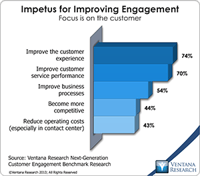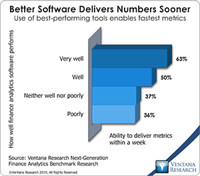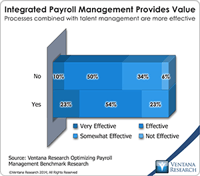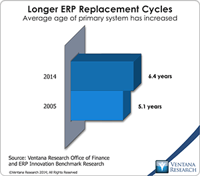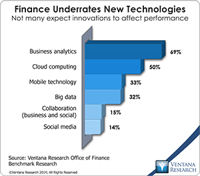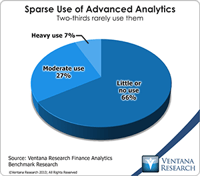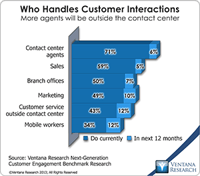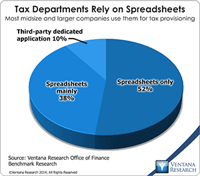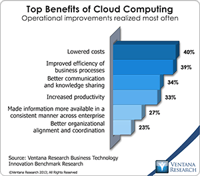Read More
Topics:
Customer Analytics,
Customer Experience,
Speech Analytics,
Analytics,
Cloud Computing,
Customer & Contact Center,
Customer Service,
Call Center,
Contact Center,
Contact Center Analytics,
CRM,
Text Analytics
Read More
Topics:
Microsoft,
Mobile,
SaaS,
Sales,
Sales Performance,
Salesforce.com,
Supply Chain Performance,
ERP,
HCM,
Human Capital,
Office of Finance,
Dynamics AX,
Dynamics GP,
Dynamics NAV Dynamics SL,
Kenandy,
PSA,
Sage Software,
Unit4,
Operational Performance,
Analytics,
Business Analytics,
Business Collaboration,
Business Performance,
Cloud Computing,
Collaboration,
Customer & Contact Center,
Financial Performance,
Workforce Performance,
CFO,
FinancialForce,
HR,
Infor,
Workday,
HANA,
Plex,
Professional Services Automation
ADP recently held its annual analyst day in the company’s new innovation center in the Chelsea district of Manhattan. The location emphasized what ADP wanted to get across to the analyst community at the event: that it intends to become a significant vendor of human capital management (HCM) software based in the cloud. ADP hopes to broaden its business from being largely an outsourcing vendor of payroll and related services (such as for auto dealers) to one that provides software for a range of...
Read More
Topics:
Big Data,
Mobile,
Social Media,
HCM,
Human Capital Management,
Office of Finance,
Predictive,
Analytics,
Business Analytics,
Business Collaboration,
Business Intelligence,
Cloud Computing,
Mobility,
Workforce Performance,
compliance,
HR,
HRMS,
Healthcare Compliance
Like most vendors of on-premises ERP and financial management software, in moving to the cloud Oracle has focused on developing for existing and potential customers the option of multitenant software as a service (SaaS). (I’m using the term “ERP” in its most expansive sense, to include such systems employed by all types of companies for accounting and financial management rather than only systems that are used by manufacturing and distribution companies.) Oracle’s ERP Cloud Service includes ...
Read More
Topics:
Microsoft,
Mobile,
SaaS,
Sales,
Salesforce.com,
ERP,
HCM,
Human Capital,
Office of Finance,
Dynamics AX,
Dynamics GP,
Dynamics NAV Dynamics SL,
Kenandy,
PSA,
Sage Software,
Unit4,
Operational Performance,
Analytics,
Business Performance,
Cloud Computing,
Collaboration,
Customer & Contact Center,
Financial Performance,
CFO,
FinancialForce,
HR,
Infor,
Workday,
HANA,
Plex,
Professional Services Automation
FinancialForce’s 2014 summer release incorporates improvements in mobile and collaboration features and provides enhancements to the planning dimension of its professional services automation (PSA) suite. In the last couple of releases the company emphasized expansion in the functional capabilities of its ERP suite, as I noted, focusing on human capital management and professional services automation as well as some supply chain automation capabilities.
Read More
Topics:
SaaS,
Sales,
Sales Performance,
Salesforce.com,
Social Media,
ERP,
HCM,
Human Capital,
Office of Finance,
Consulting,
distribution,
PSA,
Unit4,
Analytics,
Business Performance,
Cloud Computing,
Financial Performance,
FinancialForce,
HR,
Professional Services Automation,
SCM
“What’s next?” is the perennially insistent question in information technology. One common observation about the industry holds that cycles of innovation alternate between hardware and software. New types and forms of hardware enable innovations in software that utilize the power of that hardware. These innovations create new markets, alter consumer behavior and change how work is performed. This, in turn, sets the stage for new types and forms of hardware that complement these emerging product...
Read More
Topics:
Mobile,
Performance Management,
Predictive Analytics,
Sales Performance,
Supply Chain Performance,
ERP,
Office of Finance,
Reporting,
Wearable Computing,
Management,
close,
closing,
computing,
Operational Performance,
Analytics,
Business Analytics,
Business Collaboration,
Business Performance,
Cloud Computing,
Financial Performance,
Workforce Performance,
finance,
FPM
Read More
Topics:
Customer Analytics,
Customer Experience,
Operational Performance,
Analytics,
Business Analytics,
Business Intelligence,
Cloud Computing,
Customer & Contact Center,
Customer Service,
Call Center,
Contact Center,
Contact Center Analytics,
CRM
I’ve written before about the increasing importance of having a solid technology base for a company’s tax function, and it’s important enough for me to revisit the topic. Tax departments are entrusted with a highly sensitive and essential task in their companies. Taxes usually are the second largest corporate expense, after salaries and wages. Failure to understand this liability is expensive – either because taxes are overpaid or because of fines and interest levied for underpayment. Moreover,...
Read More
Topics:
ERP,
Governance,
GRC,
Office of Finance,
audit,
finance transformation,
LongView,
Tax,
Analytics,
Business Analytics,
Business Intelligence,
Business Performance,
Financial Performance,
Information Management,
Oracle,
CFO,
Risk & Compliance (GRC),
Vertex,
FPM,
Innovation Awards,
Thomson-Reuters multinational
It’s widely agreed that cloud computing is a major technology innovation. Many companies use cloud-based systems for specific business functions such as customer service, sales, marketing, finance and human resources. More generally, however, analytics and business intelligence (BI) have not migrated to the cloud as quickly. But now cloud-based data and analytics products are becoming more common. This trend is most popular among technology companies, small and midsize businesses, and...
Read More
Topics:
Big Data,
SaaS,
Sales Performance,
Social Media,
Governance,
Statistics,
cloud analytics,
IT Performance,
Analytics,
Business Analytics,
Business Intelligence,
Business Performance,
Cloud Computing,
Customer & Contact Center,
Data Integration,
Financial Performance,
Internet of Things,
Location Intelligence,
Operational Intelligence,
Workforce Performance,
Risk & Compliance (GRC),
cloud business intelligence
The human resources management system (HRMS) have been a central part of human resources departments for decades. Though useful to HR, these systems have also been static. Speaking generally, their functionality has not advanced greatly while other technologies have made great strides, and the information in them has been restricted to mostly use by HR professionals. However, along with growth in distinct and integrated talent management systems and in workforce management systems, this has...
Read More
Topics:
Big Data,
Mobile,
Social Media,
HCM,
TM,
WFM,
Analytics,
Business Analytics,
Business Collaboration,
Business Intelligence,
Cloud Computing,
Information Applications,
Workforce Performance,
HRMS,
Talent Management,
Workforce Management,
HR Management,
HRIS
